High-end kitchen builds or renovations typically come down to a choice between marble or granite countertops. Both are great materials that make a kitchen feel luxurious.
They’re also the best way to add value to a home. Kitchens are great at retaining the value of upgrades, so investing in the nicest materials typically pays off well when it’s time to sell.
But what are the main differences between marble and granite?
Even though they’re often grouped together at the high end of the kitchen countertop spectrum, they’re certainly not the same. Let’s take a look at both to help you decide which one’s best for you.
Marble vs. Granite | Choosing the Right Countertop Material
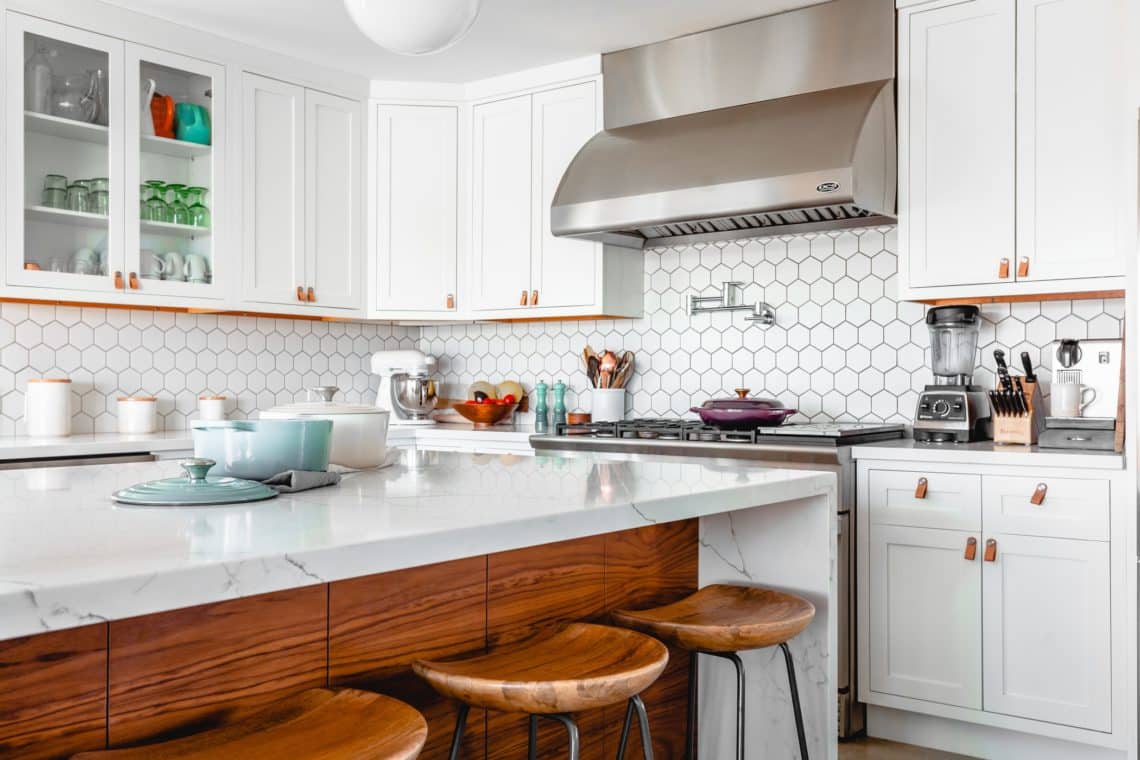
Let’s Analyze the Basics
Marble is a metamorphic rock that is made from recrystallized carbon over years and years. Granite, on the other hand, belongs to the igneous rock family made from compressed quartz, mica, feldspar, and other materials. The difference in original sources means granite is harder than marble, so it edges marble out when it comes to durability.
However, they are both very resilient and will last years with the right care. Marble and granite are some of the best countertops available for purchase, so it is hard to go wrong with either one. One thing to keep in mind is that granite has been the top countertop material choice for years, so it is not as exclusive as it once was. Homeowners and builders opt for granite so often that it gives the impression that the choice is easy.
One thing marble has going for it, though, is that it continues to be associated with top-of-the-line design. So many homes have granite countertops now that choosing marble will make a kitchen stand out more.
Difference in Appearance
Both granite and marble offer stunning countertop visuals. The veining and patterning in both make kitchens stunning, and the variety means no two kitchens are exactly alike. Because more materials go into making granite over time, tiny specks appear inside granite slabs in an array of colors.
Granite slabs often come in hues of orange, green, blue, yellow, pink, red, and other colors. The patterns and smaller veining make each granite slab unique. Homeowners love knowing their kitchen is one of a kind. Marble, on the other hand, has its own unique beauty.
Veining patterns in marble slabs are generally larger than in granite. This makes marble countertops stunning when placed over larger surface areas like open countertops or a nicely sized kitchen island. Marble slabs don’t have quite the same variety of colors as granite slabs. In general, marble veining comes in hues that are lighter or darker than the slab itself. So, for example, if you have a marble slab that has a blueish hue, its veining will likely be dark blue.
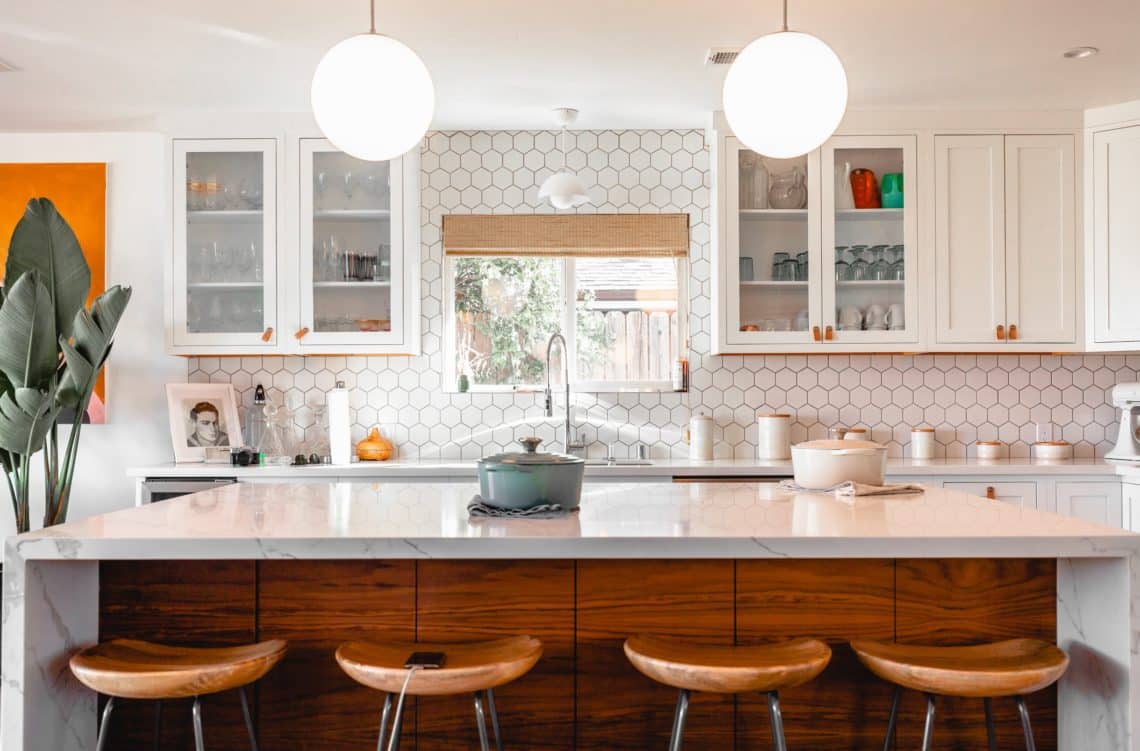
Maintenance Requirements
Marble and granite are both natural stones, so they can’t just be left alone after installation. Both are porous, so will require some degree of maintenance. Granite has the edge over marble when it comes to ease of maintenance and durability. It is an important point to consider when purchasing countertops. Marble countertops will require much more attention to keep them looking fantastic. Owners should be honest before buying about how dedicated they’ll be to maintenance.
Both materials need regular cleaning and sealant to keep them in decent shape. Failing to keep up with regular sealant application can weaken the surface. Absent a proper sealant, both materials can be permanently damaged by oil and wine spills or other harmful materials. Essentially, when there is no sealant, materials can seep into pores and become absorbed. The stains make a dark spot. Depending on the pattern and color of the slab, stains can be an easily noticed blemish on an otherwise perfect kitchen countertop.
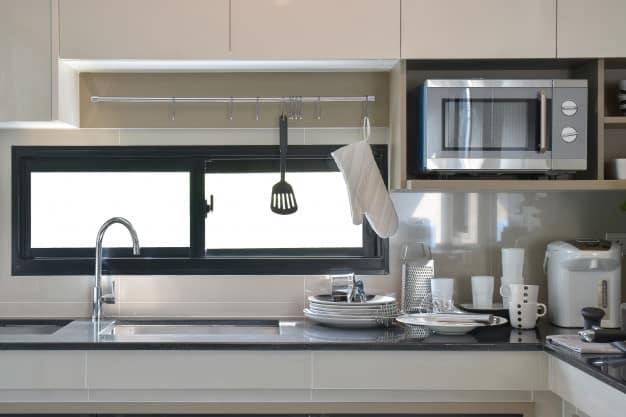
Etching is also something that marble and kitchen countertop owners have to look out for. It can occur in granite but is much rarer. Etching can look like a stain or burn but is actual physical damage to the stone itself that leaves a dull spot on the countertop.
Corrosive materials break through the outer layer of a slab down inside the marble or granite. The inside material is often lighter than the polished surface, so etching marks usually take on a lighter hue than the uniform countertop color. Culprits that etch countertops include acidic substances like juice, vinegar, cooking sauces, coffee, and soda. Strong alkaline cleaners can also cause etching, so owners should never just grab any old cleaning solution to use on marble or granite.
Purchase only specially manufactured marble or granite cleaners. One of the easiest ways to avoid etching is by not leaving glasses filled with drinks on the countertop for too long.
Price Points
It’s hard, but not impossible to find a bargain on either material for countertops. There are a good number of wholesalers who offer sales and discounts on different colors and sizes, but in general marble and granite are not for the very budget-conscious homeowner.
Granite comes in slightly more affordable than marble at $40-$100 per square foot. More exotic colors or patterns will be costlier, while mass-produced granite slabs will be more affordable. Marble costs range from $50-$150 per square foot.
Again, the highest quality, rarest marble slabs will be much more expensive than more common colors and veining. To get an idea of the total cost for a 30-square-foot kitchen, granite countertops will cost around $3,000, while marble will end up totaling approximately $4,000. Again, prices can range widely depending on the source of stones, colors, size of individual slabs, and other factors.
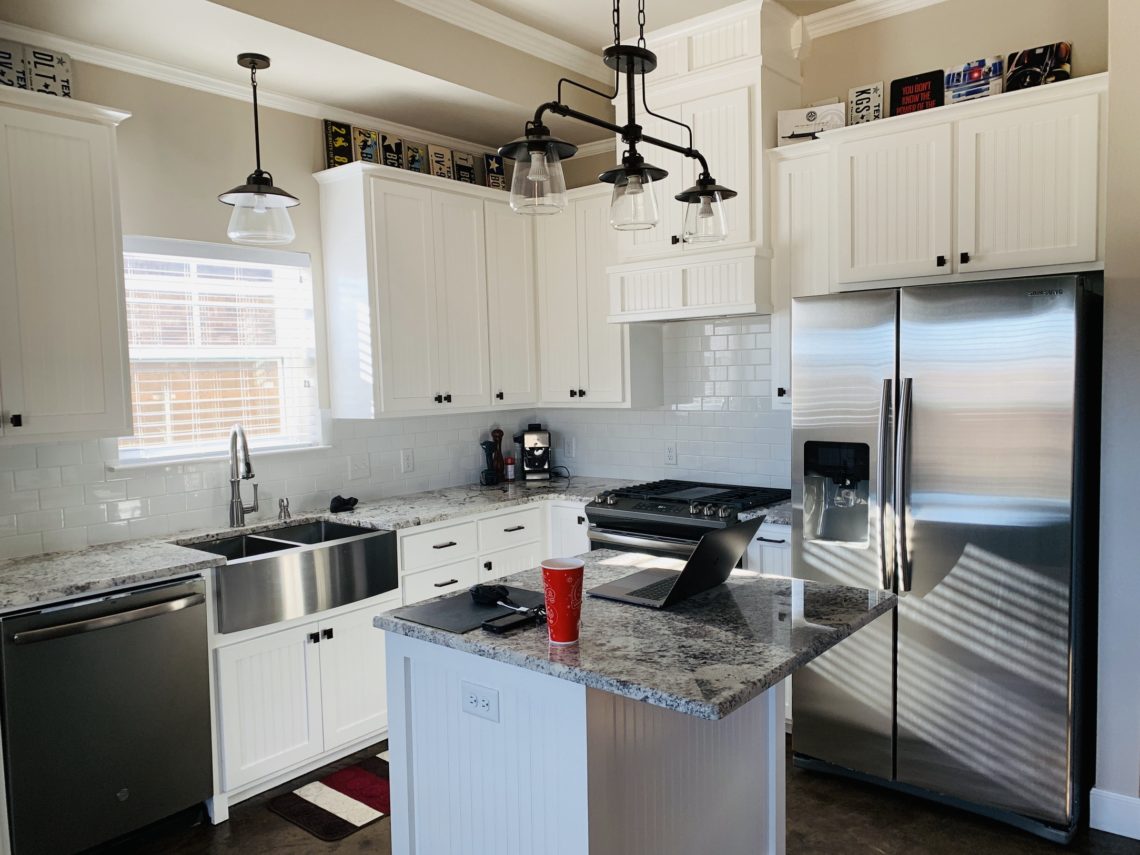
Installation Considerations
This isn’t a topic usually touched upon when comparing marble and granite, but there are differences that could impact the purchase decision. It’s more difficult to find large marble slabs than it is granite, so a full kitchen remodel using marble will require more time and material, granite installation is a bit easier from this point of view.
Marble can also come in thinner slabs, so the countertops often have a layer of reinforcement underneath. Both are important considerations, especially for DIYers who want to self-install. More slabs that are thinner mean mistakes are more likely to deal with marble and could end up costing more if replacement slabs need to be ordered.
Owners and builders working on renovations also need to take into account the weight-bearing load of the cabinetry. Granite and marble are both a lot heavier than other countertop materials, so make sure the structures can hold the weight. Unless you have experience installing marble or granite, DIY installation is not recommended.
Effects on Acoustic Properties
When considering countertop materials, it’s important to acknowledge the potential impact on a room’s acoustics. The stone’s density and porosity can influence the way sound waves interact with surfaces in your living space.
While marble and granite exhibit similar acoustical properties due to their density and rigidity, the specific choice may still have subtle effects on sound reflection and absorption.
For example, marble can exhibit slightly greater sound absorption compared to granite due to its porous structure. However, such differences might not have a significant impact on the overall acoustic experience. To learn more about creating a quieter environment and finding the most effective materials, check out our guide on soundproofing materials.
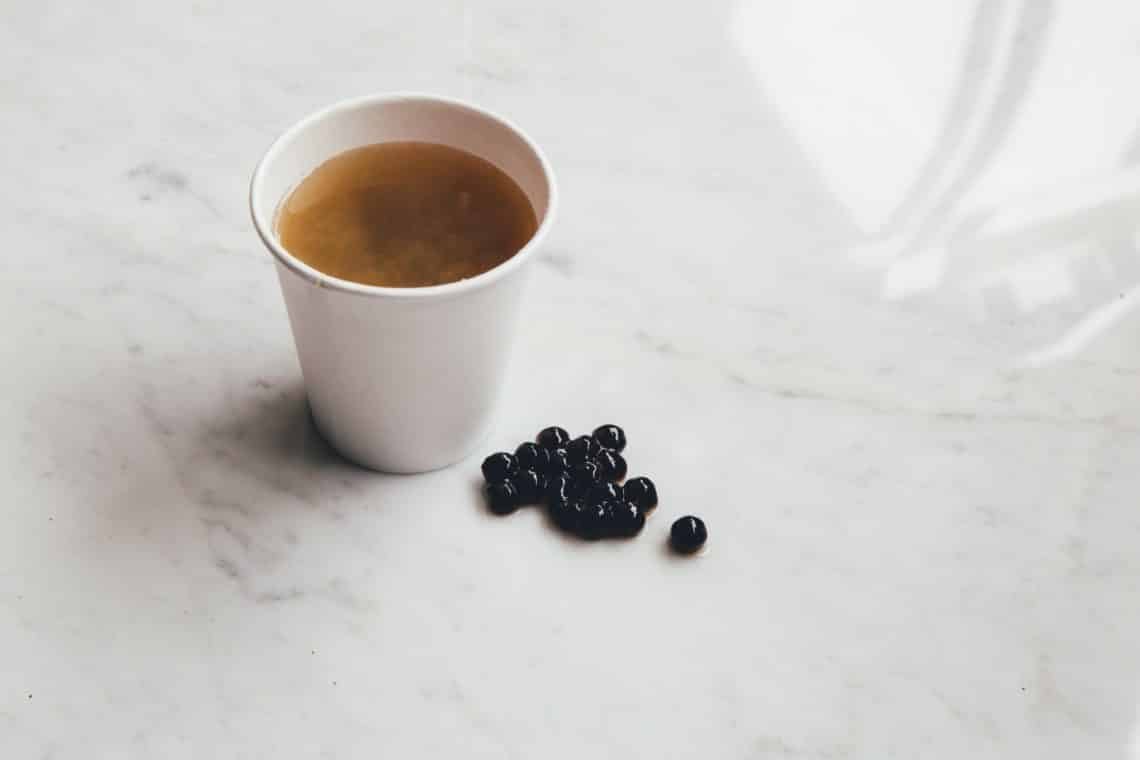
Both are great choices. No one regrets going for marble or granite countertops in their kitchen. Deciding between the two really comes down to budget, how disciplined maintenance will be, and preference over color.
Granite’s more diverse is more affordable and will require less maintenance over the years. Marble, however, is increasingly seen as a more exclusive, luxury countertop with stunning veining that will make a kitchen look like it was transported straight out of an interior design magazine.
They both hold about the same resale value, so it’s not like one or the other will get you more if the house is eventually sold. Either way, homeowners will love walking into their kitchens every day to look at their gorgeous countertops.
Related Articles


